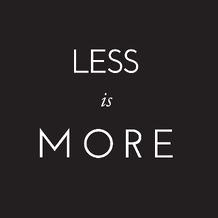
I didn’t expect to write this post.
Stop writing? Really?
Read on. We'll show you how a less-is-more approach is what makes valuable content.
Save us all some time, and take it down a notch. We’ll thank you by commenting and sharing.
Here’s 5 ways our favorite bloggers are killing it:
#1 - Use Words and Stop Writing
Contradiction? No. A paradox: it’s all about words, but don’t overkill the length. Say what you mean to say, and then stop.
Seth Godin is definitely one of our favorite bloggers and business leaders. Turns out that his 120K readers like him too. How does he do it? You’ll be surprised at the barebones format of his blog:
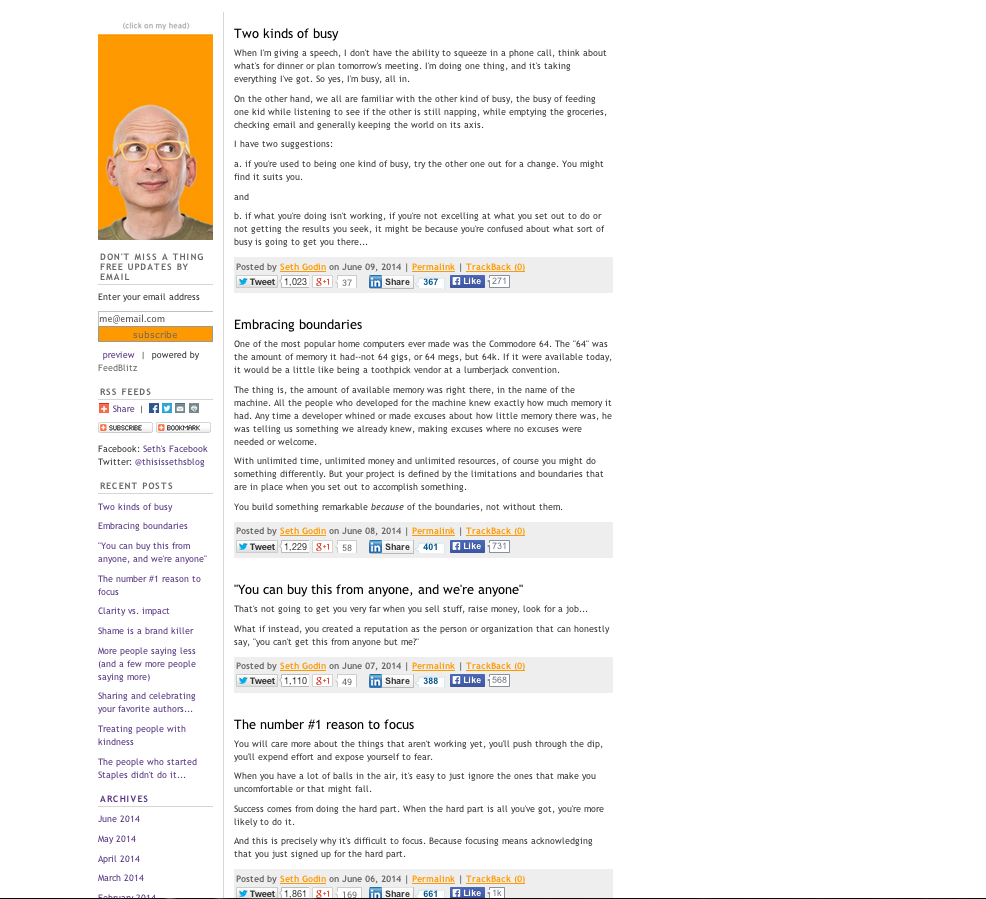
Where are the viral videos? Where are the glossy images? Where is the comment button?! Absolutely nowhere. It’s genius.
So you think he’d have lots to say and lots to write, right?
Yes and no. He certainly has a lot to say, but he doesn’t unload on his readers in one fatiguing post. He posts regularly and meaningfully, and his posts rarely exceed 300 words. One of his recent most popular posts was only 67 words:
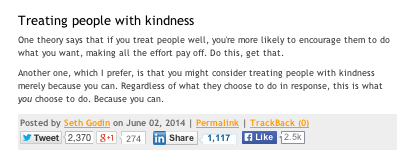
His posts are short and packed with useful and inspirational content. Their brevity is perfect for a busy reader who is looking for constructive content that is quickly accessible. Readers often don’t have time to watch a video, or scroll through images. They want something quick that helps he/she focus and get productive.
Readers are also more likely to share a blog post that they haven’t exhausted themselves reading. They read it. They like it. They share it. In less than five minutes.
Here is a list of questions you can ask yourself when writing and editing your blog posts:
- What bit of knowledge/information do I want to share with readers?
- Is there any content that is redundant or doesn’t really support my main idea?
- Is this content inspiring?
- What can I get rid of?
- Is there too much clutter that is distracting from the meat of the post?
- What is your goal? To go “viral” or to create valuable content that your tribe will share?
- What can I get rid of? (Yes, ask this again and again and again).
- Would I share this? Would I use this information
#2 - Don’t Throw the Baby Out With the Bath Water
I’m not saying you should never use another image or video again, or that your posts should not exceed 300 words. What works for Seth Godin might not completely match your business identity. Perhaps your how-to posts need to be quite lengthy in order to be clear and helpful.
But you can learn from Seth Godin’s minimalism, and apply it in a way that will make your blog posts stronger. All of us can benefit from more editing.
Another favorite blog is Buffer Blog.
They give you a tool or a suggestion, and then they show you what that looks like to clarify the text. They aren’t just throwing any stock image up on their page.
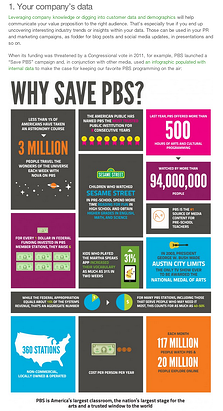
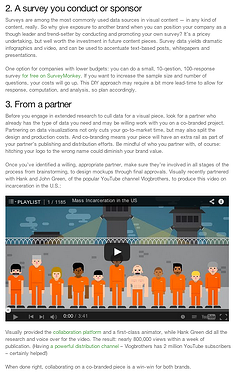
Buffer Blog has a strong and loyal readership because they’re providing helpful blog content that businesses are sharing and using.
Hubspot found that when they included an image with a link on Twitter that they received 55% more leads. Go ahead, use an image with Twitter--but only if it matches the content, it’s useful, and adds value for the reader. It should be informative, not ambiguous.
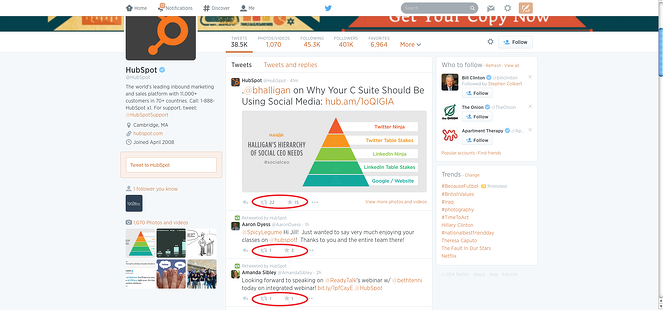
People love videos. Don’t abandon them completely. But it’s probably a good idea to balance out your videos with less text. Videos often take a few minutes of people’s time--don’t overdo it with another ten minutes of reading.
Know your brand. Be direct. Keep it simple. Everything on the page/blog post should be useful.
1. Do you need an image at all?
2. Will the image you choose really add to the text?
3. Is the image making up for sloppy writing?
4. Will a video really add depth to your article? Does it say something better than you can say it?
5. Does a video or image say anything new? Is it interesting?
6. Can the video speak for itself? Do you really need to write 2+ paragraphs in addition?
#3 - Choose Your Own Adventure
All of our favorite blogs make it easy for readers to see a list of recent blog posts so they can decide how deep they want to dig into the content. If a new visitor to your blog doesn’t immediately feel drawn to your most recent post she can quickly view other topics you’ve covered, and she is more likely to find something of interest. Without a comprehensive list/summary of what you discuss on your blog you might lose some potential readers.
A list and summary of all your blog posts is also more approachable than a lengthy, scroll-necessary post. The list creates a lot of white space, and readers can bookmark posts of interest to read later.
Avoid overwhelming your readers, and let them decide if they want to dip their toes in today and dive in head-first tomorrow.
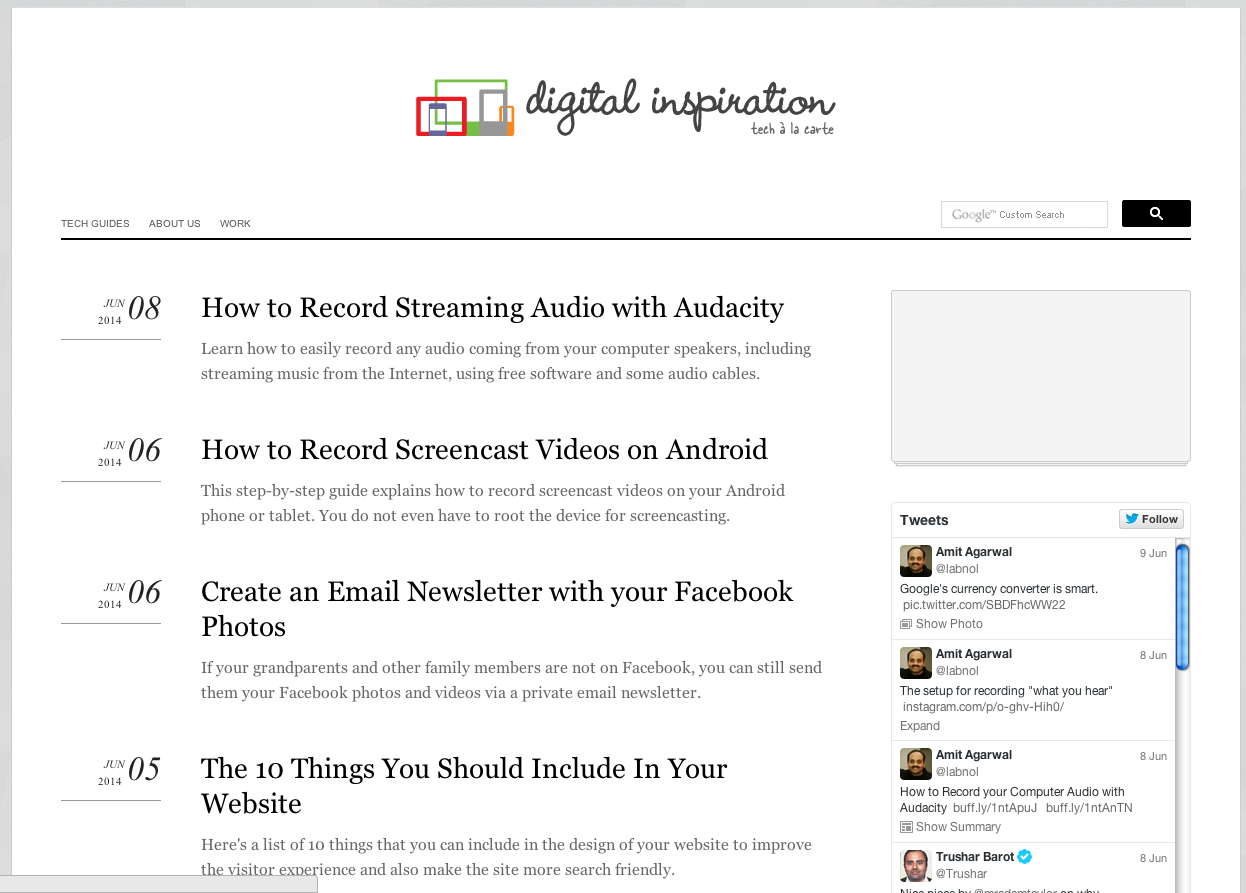

1. Is the breadth of your content easy to see on your blog home page?
2. Do you have a list of blog posts always available no matter where your reader is on the blog?
3. Do you include "Read More" links to allow your readers to choose their own adventure?
4. Are your summaries, intros and headlines interesting enough that readers will want to continue reading, and will share the article?
#4 - Make Room!
If you keep your blog posts tight and to the point you actually leave space for your readers to add to the conversation. If you say it all, what else is there to say? Utilize the broad experiences of your readers to add depth, and validation, to your posts.
Quick Sprout has a great article with tips on how to get more comments.
However, comments aren’t the only way to get readers involved in the conversation. Godin’s readers share his posts. All they have to do is click a button to say “Hey everyone, I think this is worth your time. If you share it too then you agree that it is valuable.”
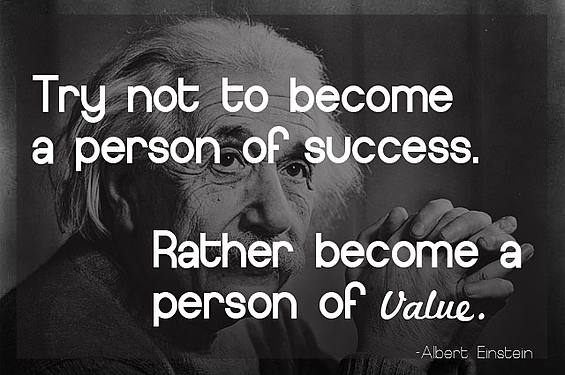
You can expand the size of the room by writing content worth sharing.
Ask yourself these questions to identify how you can create depth with reader participation:
How do we want readers to engage? Commenting, sharing, both?
1. Did we leave room for readers to add their thoughts and experiences?
2. Is our blog post valuable enough that people want to share it?
3. Does the length of our blog post encourage sharing, or are you losing your readers half-way through the post?
#5 - Play With Fire
If you’re passionate about your blog content, light it on fire. Your opinion is valuable content, and could spark an interesting and lively debate. You have a personality--let it come through in your blog posts. Readers will feel more comfortable leaving a comment if they feel like they have a good idea of you you are. They won’t converse with a business, but they’ll definitely react to a person.
I love this blog post from the Sparring Mind blog entitled “Be Like Han : 7 Life Lessons from Han Solo.”
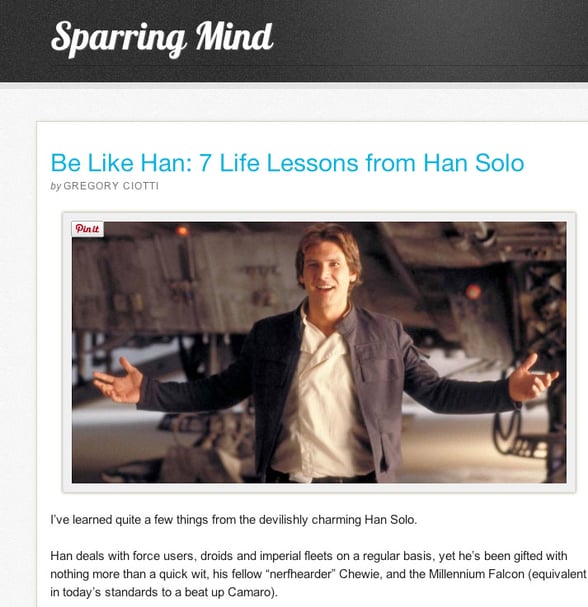
Immediately we know the author is a person with a passion for Star Wars, and many of us can relate. Who doesn’t want to read about something they love in the middle of a work day? What Star Wars fan sitting at a cubicle wouldn’t want to share this with their other sci-fi friends?
Then there’s this blog post from Jay Goltz on his New York Times blog, You’re the Boss:
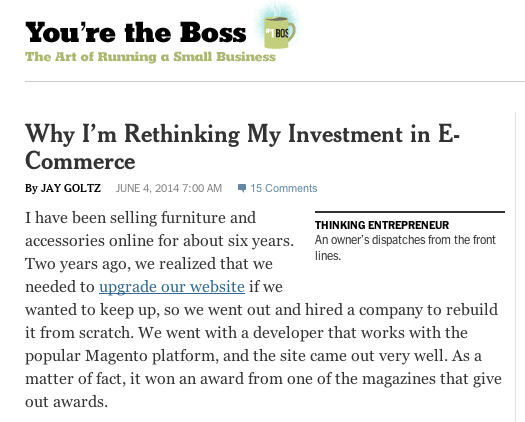
Goltz challenges our perception of what an e-commerce site is and isn't. Expressing his opinion prompted readers to both agree and disagree with him, and some even gave him helpful suggestions for his website.
1. What do you feel strongly about?
2. Are you writing about topics that you are passionate about?
3. Are you hiding behind your blog posts?
Godin’s blog posts get thousands of shares...which lead to a TED talk with over 1,300,000 views. His blog posts probably wouldn’t be classified as “viral,” but they certainly validated his expertise and relevancy, and now everyone is reading his books and watching his speeches.
Time is money. When people read your blog they’re spending their money. Make it worth their time, and create valuable content. Every word, every image, every link should provide your readers useful information that will lead them to better practices--that lead to profitability.
Here's the recap on how to create valuable blog content:
#1 - Stop Writing
#2 - Use relevant media
#3 - Provide Readers With Choices
#4 - Make Room for Your Readers to Engage
#5 - Use Your Opinion to Add Life to Your Blog Posts
Related Reading: 4 Tips for Small Business Blogging
Want to Read Other Articles Like This One?
Don't forget to subscribe to our blog and get posts like this one delivered to your inbox each week or month.




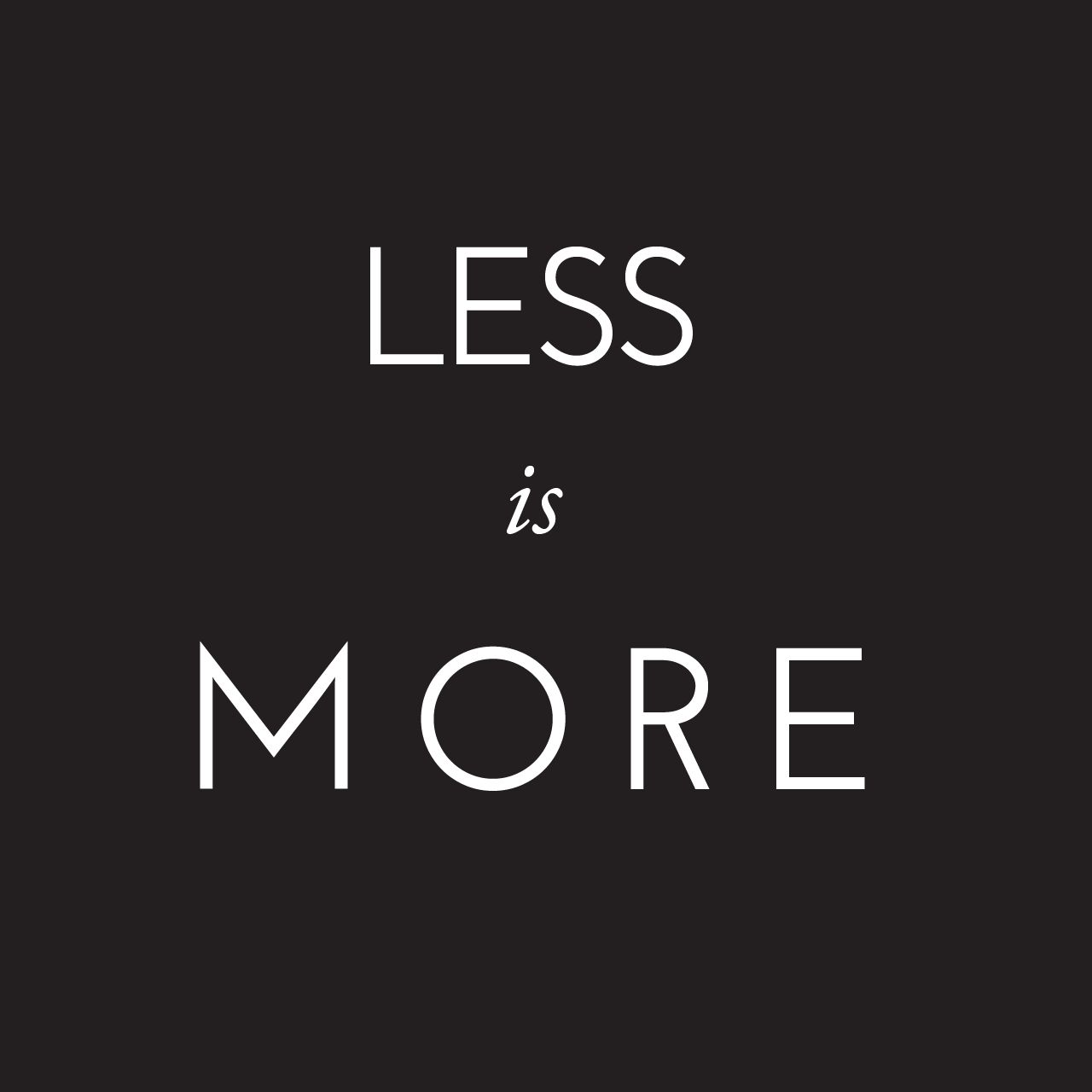

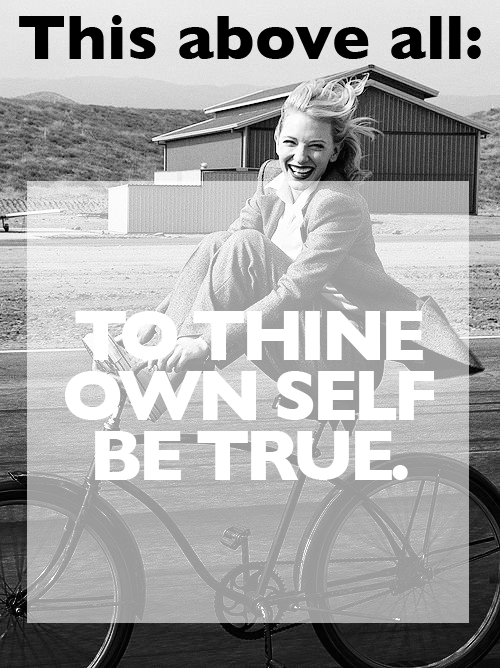







.png)


